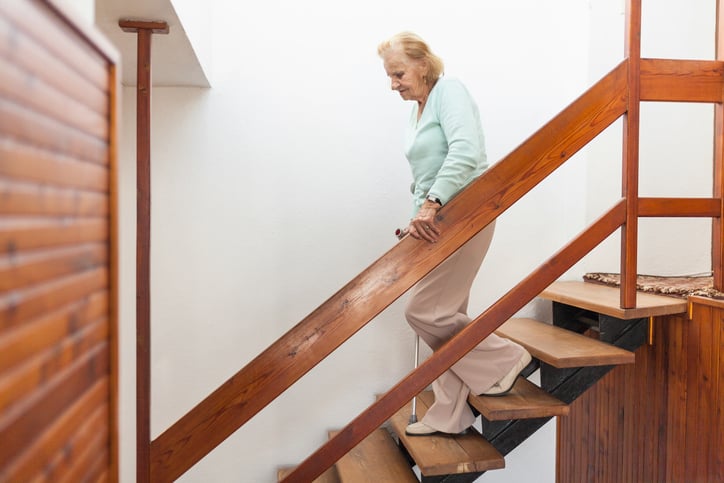As we age, our homes may become both a haven and a potential hazard. For many seniors, stairs pose a significant risk of falls, leading to injuries and a loss of independence. In this article, we’ll explore the importance of addressing fall risks among seniors and how stairlifts emerge as a game-changer in enhancing safety and mobility.
Understanding the Fall Risk:
Falls are a leading cause of injury and loss of independence among seniors. According to the Centers for Disease Control and Prevention (CDC), one in four Americans aged 65 and older experiences a fall each year. Stairs, once an inconspicuous part of our homes, can become a formidable obstacle as mobility and balance decline with age.
Challenges Faced by Seniors:
Navigating stairs can be particularly challenging for seniors dealing with conditions such as arthritis, muscle weakness, or reduced joint flexibility. Additionally, factors like medication side effects and vision impairments can further increase the risk of stumbling and falling. As a result, many seniors may find themselves avoiding certain parts of their homes or, in extreme cases, contemplating moving to a single-level residence.
The Role of Stairlifts in Fall Prevention:
Stairlifts, also known as chairlifts or stair gliders, offer a practical and efficient solution to mitigate fall risks associated with stairs. These devices are designed to transport individuals safely up and down staircases, promoting independence and enabling seniors to continue enjoying all areas of their homes. Let’s delve into how stairlifts contribute to the safety and well-being of seniors.
1. Enhanced Mobility:
Stairlifts provide seniors with a newfound sense of mobility within their homes. By eliminating the need to climb stairs manually, these devices ensure that every floor is easily accessible. This not only prevents falls but also encourages seniors to maintain an active lifestyle by freely moving between different levels of their homes.
2. User-Friendly Design:
Stairlifts are designed with user comfort in mind. The controls are simple and easy to use, allowing seniors to operate the device independently. The chair or platform is equipped with safety features such as seat belts and armrests, providing a secure and comfortable ride. The user-friendly design ensures that seniors can navigate stairs with confidence and peace of mind.
3. Adaptability to Various Stair Configurations:
Stairlifts are versatile and can be installed on straight or curved staircases, as well as on outdoor steps. The adaptability of these devices makes them suitable for a wide range of home configurations, ensuring that seniors can customize the solution to fit their specific needs. This flexibility is especially beneficial for those living in multi-story homes.
4. Promoting Aging in Place:
Aging in place, the ability to live in one’s own home independently and safely is a priority for many seniors. Stairlifts play a crucial role in making this goal achievable. By removing the barrier posed by stairs, these devices allow seniors to stay in the comfort of their familiar surroundings, maintaining a sense of autonomy and connection to their homes.
5. Peace of Mind for Caregivers:
Stairlifts not only benefit seniors but also provide peace of mind for their caregivers. Knowing that their loved ones can navigate stairs safely reduces the stress and worry associated with potential falls. Caregivers can rest assured that stairlifts contribute to a safer living environment, allowing seniors to age gracefully at home.
Installation and Maintenance:
The installation of a stairlift is a relatively straightforward process that can be customized to fit the layout of the home. Professional technicians assess the specific needs of the individual and tailor the installation accordingly. Regular maintenance ensures the continued reliability and safety of the device, providing seniors and their families with ongoing peace of mind.
Cost Considerations and Funding Options:
While the initial cost of a stairlift may be a concern for some, it’s essential to weigh this against the potential medical costs and loss of independence associated with a fall. Additionally, there are funding options and financial assistance programs available to help make stairlifts more affordable. Exploring these options ensures that safety solutions are accessible to a broader range of seniors.
Conclusion:
In the journey of aging, maintaining safety and independence within one’s home is paramount. Stairlifts emerge as a transformative solution, addressing the challenges posed by stairs and reducing the risk of falls for seniors. By embracing such innovations, older adults can confidently navigate their homes, reclaiming spaces that were once restricted. The investment in stairlifts not only enhances safety but also contributes to the overall well-being and quality of life for seniors, allowing them to step up to a future filled with continued independence and security.




